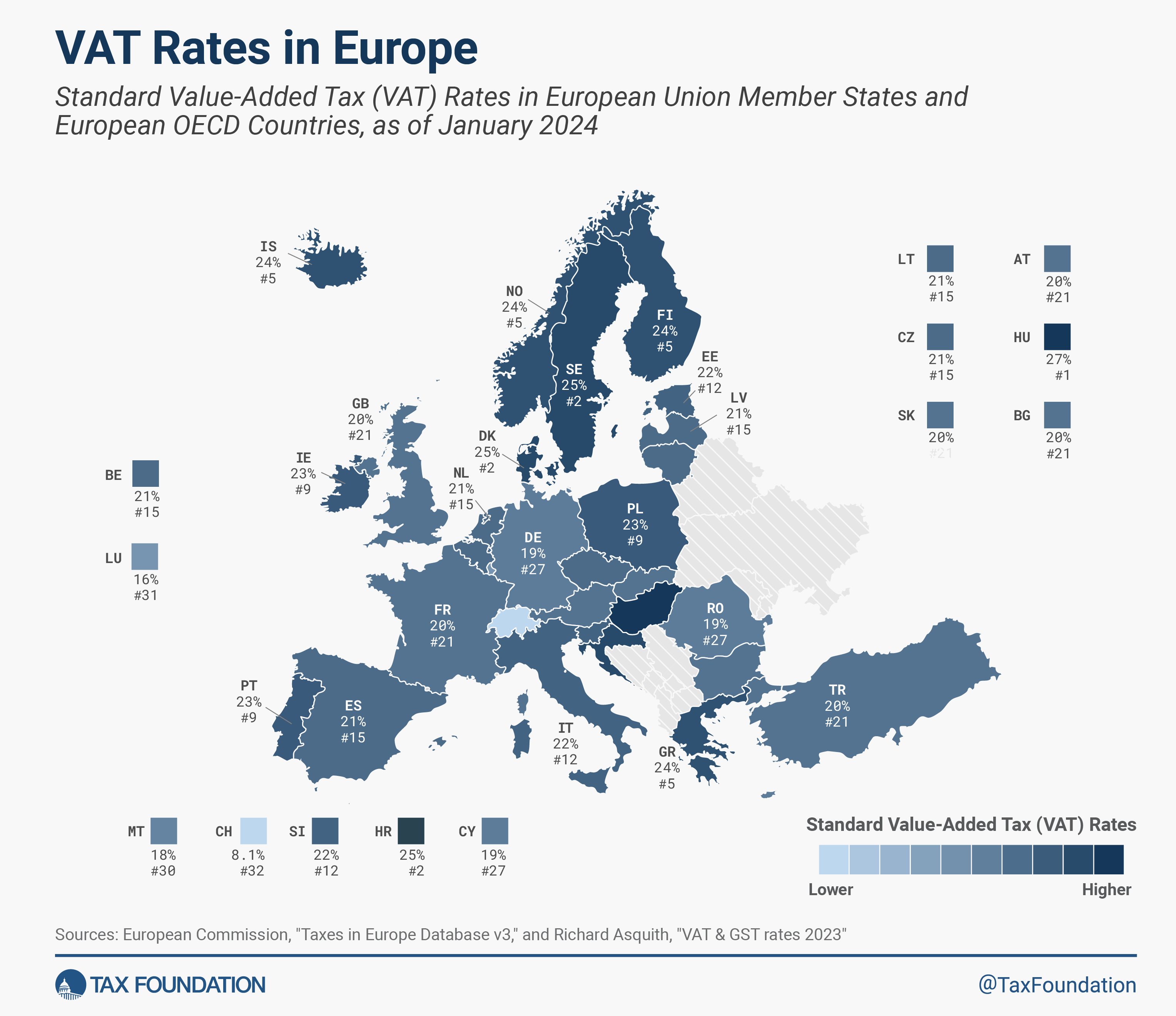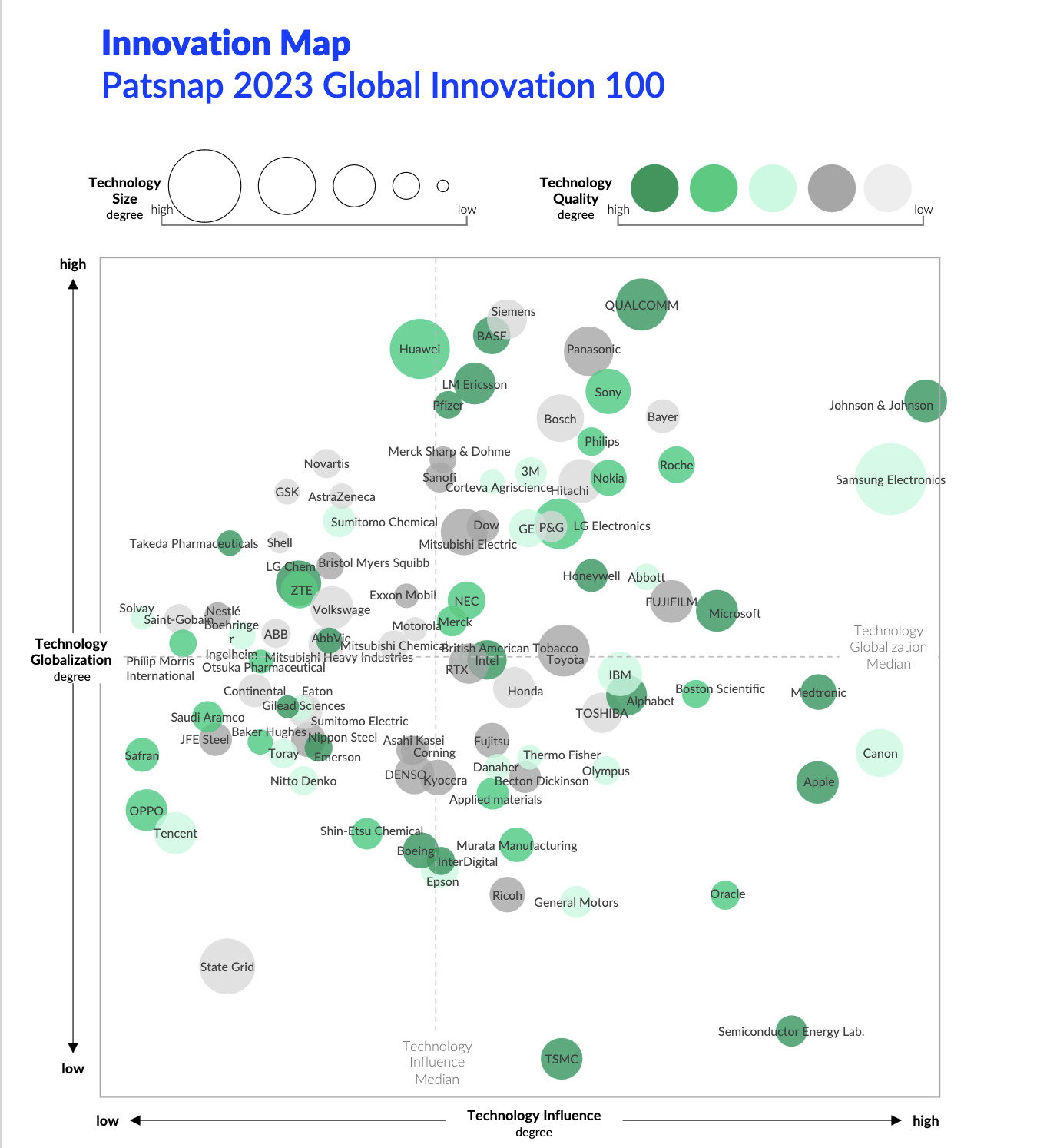The Federal Circuit Could Make the ITC a More Appealing Forum
“Lashify, Inc. v. ITC presents the potential for the Federal Circuit to resolve this long-running dispute and make application of the domestic industry requirement more uniform and predictable.”
In a pending case, the Federal Circuit is primed to provide much-needed clarity on the economic prong of the domestic industry requirement at the United States International Trade Commission (ITC). In ruling, the court will likely resolve a long-running dispute between individual commissioners regarding how to apply the so-called “mere importer” test when determining whether the domestic industry requirement is met. If the complainant, Lashify, prevails, it could make the ITC a more appealing forum for patent infringement suits involving entities that have under-utilized the ITC, including inventors, universities, and start-ups. The case at issue is Lashify, Inc. v. ITC, No. 23-1245.
A Brief Primer on the Domestic Industry Requirement
The domestic industry requirement is defined in the ITC’s governing statute, 19 U.S.C. § 1337. The statute provides that the ITC can provide relief for infringement of patent and other intellectual property rights “only if an industry in the United States, relating to the articles protected by the patent … exists or is in the process of being established.” 19 U.S.C. § 1337(a)(2). The next provision defines three separate avenues that a complainant can use to show the existence of a domestic industry, often referred to as “Prong A,” “Prong B,” and “Prong C”:
[A]n industry in the United States shall be considered to exist if there is in the United States, with respect to the articles protected by the patent […]—
(A) significant investment in plant and equipment;
(B) significant employment of labor or capital; or
(C) substantial investment in its exploitation, including engineering, research and development, or licensing.
19 U.S.C. § 1337(a)(3). For a more detailed discussion of the domestic industry requirement, see Defending Breakthrough Innovations – Protecting University Patents at the ITC.
The Commission’s Determination
The case involves a complaint filed by Lashify at the ITC in September 2020 against several domestic and foreign retailers of cosmetic products alleging infringement of several U.S. patents. See generally Certain Artificial Eyelash Extension Systems, Products, and Components Thereof, Inv. No. 337-TA-1226.
Lashify is a small U.S. start-up based in Los Angeles. Its founder and CEO, Sahara Lotti, is also the sole named inventor on the relevant patents. According to Lashify, Ms. Lotti developed a novel at-home artificial eyelash extension system working out of her home. Starting as a sole inventor in 2017, Ms. Lotti patented her lash extension products and grew a business around her innovations, resulting in approximately 100 U.S. employees and multiple U.S. commercial facilities by 2020.
As summarized by Lashify, it sought to satisfy the domestic industry requirement through its U.S. investments in its lash extension products practicing the asserted patents:
“[Lashify] is a fast-growing American startup founded on innovation and development of an entirely new product that revolutionized the market for artificial eyelashes. Lashify invented, designed, and developed its eyelash extension system in the United States. Because domestic manufacturers lack the capability to make its products, Lashify utilizes foreign contract manufacturers. Otherwise, Lashify performed and continues to perform all the work necessary to create, develop, commercialize, distribute, sell, and support its products in the United States.”
After an evidentiary hearing, the presiding administrative law judge found in October 2021 that, while certain asserted patents were valid and infringed, Lashify’s claimed investments failed to satisfy the domestic industry requirement. Upon review by the Commission, a majority of the commissioners affirmed the ALJ’s determination in October 2022.
As relevant here, the majority declined to credit Lashify’s expenditures relating to “quality control activities,” “warehousing and distribution,” and “sales and marketing.” Without these investments, the majority found that Lashify was entitled to no relief for patents found to be both valid and infringed because it failed to show satisfaction of the domestic industry requirement.
However, two commissioners dissented, and instead would have found that Lashify satisfied the domestic industry requirement and should be entitled to relief based on those expenditures.
The Scope of Cognizable Domestic Industry Activities
The appeal in Lashify betrays an open question regarding the scope of what types of activities and investments can be used to satisfy the domestic industry requirement.
For context, before 1988, the domestic industry requirement was interpreted to demand proof that articles protected by the patent were manufactured within the United States. See InterDigital Communs., LLC v. ITC, 707 F.3d 1295, 1300 (Fed. Cir. 2013). However, Congress amended the statute in 1988 to remove this provision, such that the statute “provided protection for [U.S.] industries that were based on the creation and exploitation of intellectual property even if they did not produce the ultimate products that embodied that technology.” Id. According to contemporaneous Senate and House reports, the domestic industry requirement was retained “to preclude holders of U.S. intellectual property rights who have no contact with the United States other than owning such intellectual property rights from utilizing section 337.” Id. at 1302.
More than 35 years later, substantial disagreement remains regarding the scope of protection to domestic industries that Congress intended to provide. While Congress made clear that § 1337 “would provide protection for American industries that did not manufacture products but were engaged in engineering, research and development, or licensing of the technology that others used to make products,” the question remains whether other, unenumerated activities – such as the warehousing, distribution, quality control, and sales and marketing at issue in Lashify – could be used to satisfy the domestic industry requirement. Id. at 1300.
The ‘Mere Importer’ Schism
The central issue on appeal in Lashify is whether and how to consider investments in these unenumerated activities, namely sales and marketing. This issue, often referred to as the “mere importer” test, stems from language in a pre-1988 amendment Federal Circuit case that distinguished a statutory “domestic industry” from activities that a “normal importer” would perform. See Schaper Mfg. Co. v. ITC, 717 F.2d 1368, 1372-73 (Fed. Cir. 1983). Similarly, the legislative history of the 1988 amendment confirmed that “Marketing and sales in the United States alone” would not be sufficient to show a domestic industry. See Certain Stringed Musical Instruments & Components Thereof, Inv. No. 337-TA-586, Comm’n Op. at 14, 20 (May 16, 2008) (citing Senate and House reports).
As the Commission’s decision in Lashify lays bare, the individual commissioners at the ITC fundamentally disagree on the proper analytical approach to domestic industry. The Commission currently consists of five members holding three separate views of how to apply the “mere importer” test. First, in Commissioner Kearns’s view, “sales and marketing expenses should not be credited toward the satisfaction of the domestic industry requirement” under any scenario. Certain Artificial Eyelash Extension Systems, Products, and Components Thereof, Inv. No. 337-TA-1226, Comm’n Op. at 34 n.29 (Oct. 24, 2022). Second, according to Chair Johanson and Commissioner Stayin, “non-qualifying activities, such as sales and marketing,” may only be considered after first crediting sufficient “traditional qualifying cognizable activities, including research, design, and development of the domestic industry products, as well as warranty, repair, and customer service of the domestic industry products, among others.” Id. at 57; see also id. at 32-34. Finally, Commissioners Karpel and Schmidtlein explain that, in their view, there is no express prohibition on crediting unenumerated activities like sales and marketing, and that instead, the issue “can only be evaluated looking at complainant’s activities as a whole to determine if the nature and extent of those collective activities distinguish it from a ‘mere importer.’” Id., Dissent at 39.
The dispute among the Commissioners dates to at least January 2021, where Commissioner Schmidtlein authored a series of footnotes indicating her disagreement with the majority’s domestic industry analysis that excluded investments in sales and marketing. Rather, Commissioner Schmidtlein observed that “sales and marketing investments, when combined with other qualifying domestic investments or activities, can be credited in determining whether a domestic industry exists.” Certain Botulinum Toxin Prods., Processes for Manufacturing or Relating to Same and Certain Prods. Containing Same, Inv. No. 337-TA-1145, Comm’n Op. at 47 n.35 (Jan. 13, 2021).
Since then, in at least ten separate cases and as recently as October 2023, one or more of Commissioner Schmidtlein (often joined by Commissioner Karpel) and/or Chair Kearns has separately indicated differing views on the proper application of the mere importer test:
- Certain Bone Cements, Components Thereof & Prods. Containing the Same, Inv. No. 337-TA-1153, Comm’n Op. at 30 n.28 & 31 n.29 (Jan. 25, 2021): Chair Kearns and Commissioner Schmidtlein each disagreeing with the majority’s description of the mere importer test.
- Certain Movable Barrier Operator Sys. & Components Thereof, Inv. No. 337-TA-1209, Comm’n Notice at 2 (May 26, 2021): “Chair Kearns notes that it remains an open question to him whether (or the extent to which) investments and expenses related to installation and service should be credited in an economic prong analysis, as these appear to be activities that a mere importer would engage in.”
- Certain High-Density Fiber Optic Equip. and Components Thereof, Inv. No. 337-TA-1194, Comm’n Op. at 60 n.35 (Aug. 23, 2021): Chair Kearns noting that “activities akin to those of a mere importer” do not “qualify for inclusion in the domestic industry.”
- Certain In Vitro Fertilization Prods., Components Thereof, & Prods. Containing the Same, Inv. No. 337-TA-1196, Comm’n Op., Dissenting Views at 1 (Oct. 28, 2021): Commissioners Karpel and Schmidtlein writing that they “do not agree with the Majority’s ‘line-by-line’ approach to the ‘mere importer’ test, whereby a complainant’s domestic investments are discounted or rejected entirely if, when individually considered, the investments are deemed to be with respect to activities of a ‘mere importer.’ Rather, a more consistent interpretation of the applicable statutory provision, legislative history, and relevant caselaw is that determining whether a complainant is a ‘mere importer’ involves consideration of the complainant’s domestic activities as a whole.”
- Certain Foodservice Equip. & Components Thereof, Inv. No. 337-TA-1166, Comm’n Op. at 10 n.9 (Oct. 29, 2021): “Commissioners Karpel and Schmidtlein disagree with the ID to the extent it suggests that sales and marketing expenses per se are not investments in activities that can contribute to the existence of a domestic industry[.]”
- Certain Percussive Massage Devices, Inv. No. 337-TA-1206, Comm’n Op. at 12 n.10 (Jan. 4, 2022): Chair Kearns noting that “most of Complainant’s domestic activities at the time of the filing of the complaint, such as supply chain and operation management for foreign manufacturing, sales, marketing, and customer service, do not appear to be distinguishable from those of a mere importer.”
- Certain Vacuum Insulated Flasks & Components Thereof, Inv. No. 337-TA-1216, Comm’n Op. at 6 n.3 (Feb. 3, 2022): “Chair Kearns clarifies, with respect to the economic prong analysis, that, in his view, it is generally not appropriate to credit investments that are those of a mere importer regardless of what other activities the firm in question engages in.”
- Certain Vaporizer Cartridges & Components Thereof,Inv. No. 337-TA-1211, Comm’n Op. at 7 n.13 (Mar. 1, 2022): Chair Kearns noting that some claimed “activities may not be distinguishable from those of a mere importer and therefore may not be appropriate to credit in the economic prong analysis.”
- Certain Electric Shavers & Components & Accessories Thereof, Inv. No. 337-TA-1230, Comm’n Op. at 13 n.4 (May 3, 2022): “Commissioners Karpel and Schmidtlein do not support the ALJ’s statement that ‘where there is no evidence of domestic manufacturing activity, it is appropriate not to credit certain of Skull Shaver’s employees solely dedicated to activities such as sales and marketing, for example.’”
- Certain Automated Put Walls & Automated Storage & Retrieval Sys., Associated Vehicles, Associated Control Software, and Component Parts Thereof, Inv. No. 337-TA-1293, Comm’n Op. at 24 n.20 (Aug. 17, 2023): Commissioners Karpel and Schmidtlein writing that complainant and ALJ correctly included “sales and marketing, human resources, travel, and non-warehouse automation activities” because complainant is not a mere importer.
- Certain Casual Footwear & Packaging Thereof, Inv. No.337-TA-1270, Comm’n Op., Dissent at 46 (Oct. 24, 2023): Chair Kearns advocating for remand “to assess which [activities] are properly considered in the economic prong analysis and which are for the activities of a ‘mere importer’ (this latter category may include, for example, marketing, sales, warehousing, and distribution activities).”
Accordingly, the individual commissioners’ differing views on the proper application of the mere importer test reflect a deep divide that not only occurs frequently, but that in many cases – including Lashify – is outcome determinative.
The Federal Circuit Could Make the ITC More Favorable to Smaller Entities
Despite the centrality of the domestic industry requirement to ITC investigations, the Federal Circuit has rarely found occasion to evaluate it. Indeed, the present dispute over the mere importer test stems from the Federal Circuit’s Schaper decision that issued more than 40 years ago. Congress went on to amend § 1337 in response to Schaper, reflecting a “concern[]” that “in some recent decisions the Commission has interpreted the domestic industry requirement in an inconsistent and unduly narrow manner.” H. Rep. No. 100-40 at 157.
Now too, current commissioners believe that the application of the domestic industry requirement “by the Commission has become overly complicated, inconsistently applied, and far afield from the inquiry Congress has instructed the Commission to undertake.” Commissioner Stayin, Certain Toner Supply Containers and Components Thereof (II), Inv. No. 337-TA-1260, Comm’n Op. at 24 (Aug. 3, 2022); see also, e.g., Artificial Eyelash Extension Sys., Inv. No. 337-TA-1226, Comm’n Op., Dissent at 37-45; In Vitro Fertilization Prods., Inv. No. 337-TA-1196,, Comm’n Op., Dissenting Views at 8-12.
Lashify thus presents the potential for the Federal Circuit to resolve this long-running dispute and make application of the domestic industry requirement more uniform and predictable. If the Federal Circuit sides with Lashify, it could serve to make the ITC a more appealing forum for smaller entities seeking to protect their intellectual property rights but that do not invest heavily in manufacturing or R&D, including inventors, universities, and small start-ups. As the dissenting Commissioners explained in Lashify:
“Lashify is not a company who has ‘no contact with the United States other than owning’ intellectual property rights nor is it a ‘mere importer.’ It is a company started and developed in the United States relying on the innovation and effort of its founder in the United States to develop and successfully market the domestic industry articles. Indeed, Lashify appears to typify a type of business the revisions to Section 337 in 1988 were designed to protect: ‘small businesses who do not have the capital to actually make the good in the United States’ but nonetheless developed the domestic industry articles in the United States and have ‘a larger service industry exploiting the intellectual property right within the United States.’”
Artificial Eyelash Extension Sys., Inv. No. 337-TA-1226, Comm’n Op., Dissent at 52 (quoting 132 Cong. Rec. H7119, remarks of Congressman Kastenmeier (Apr. 10, 1986)).
Image Source: Deposit Photos
Author: paisan191
Image ID: 88810564






